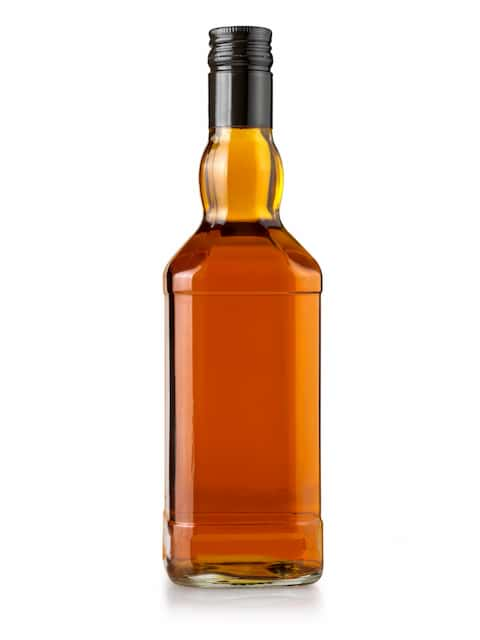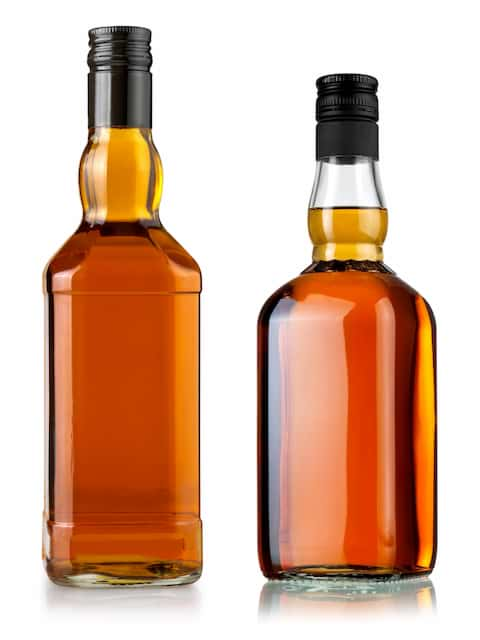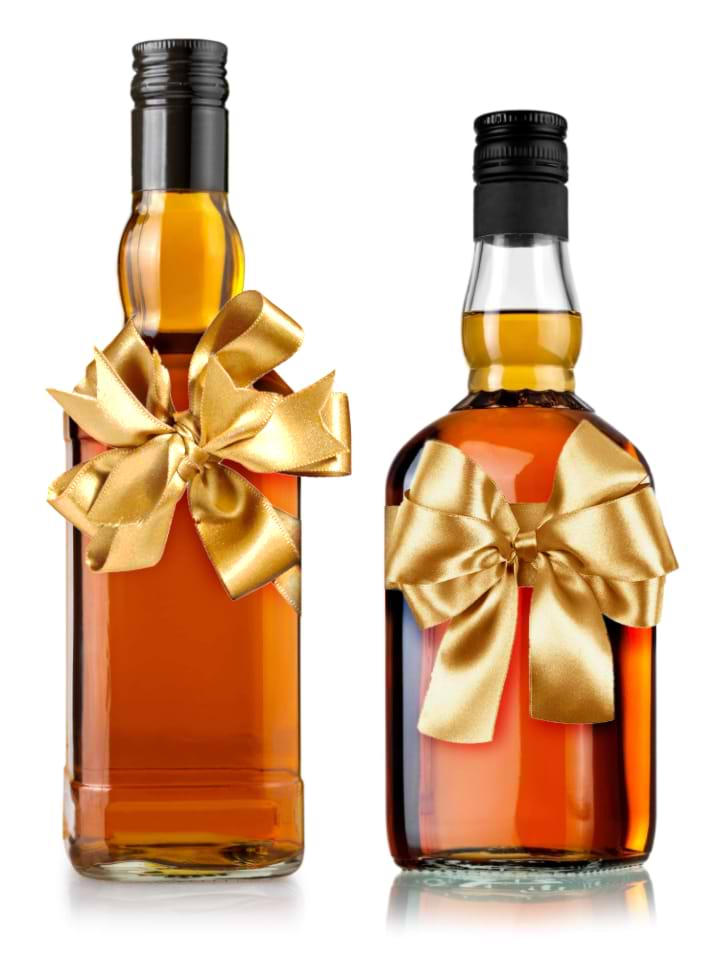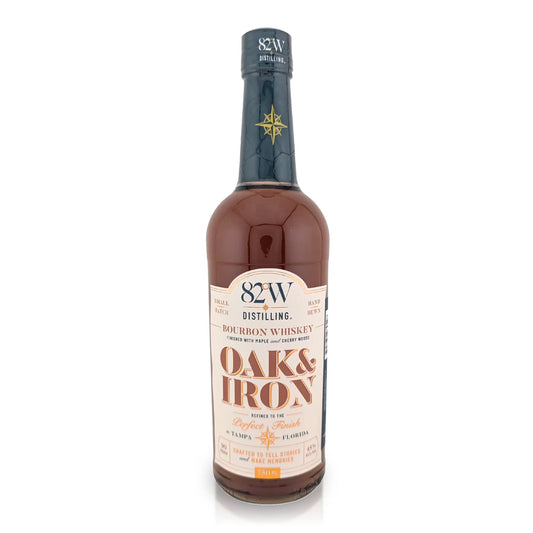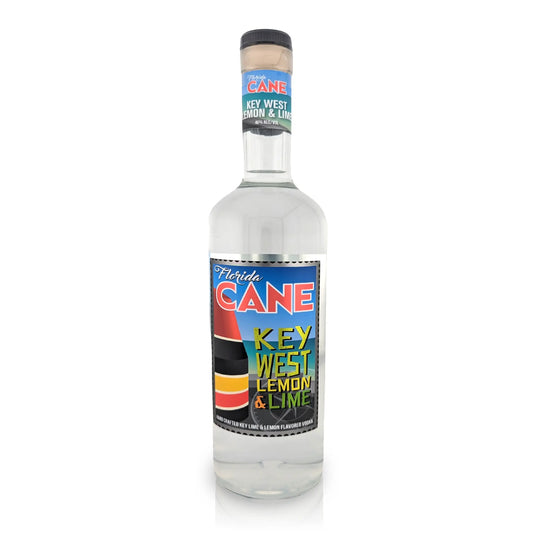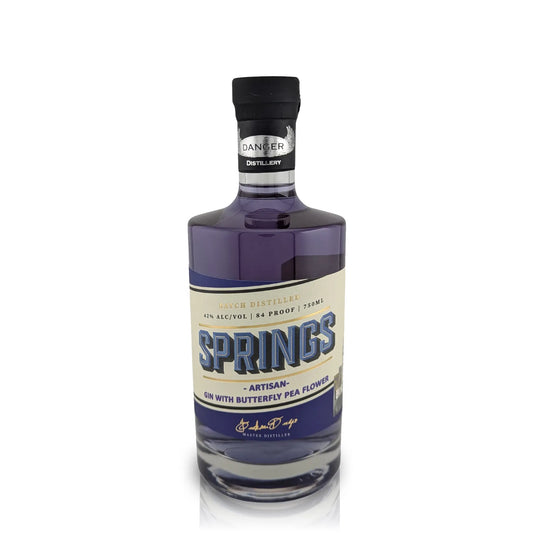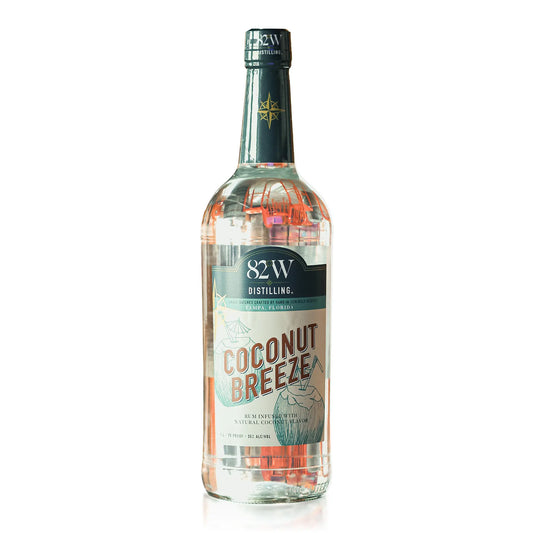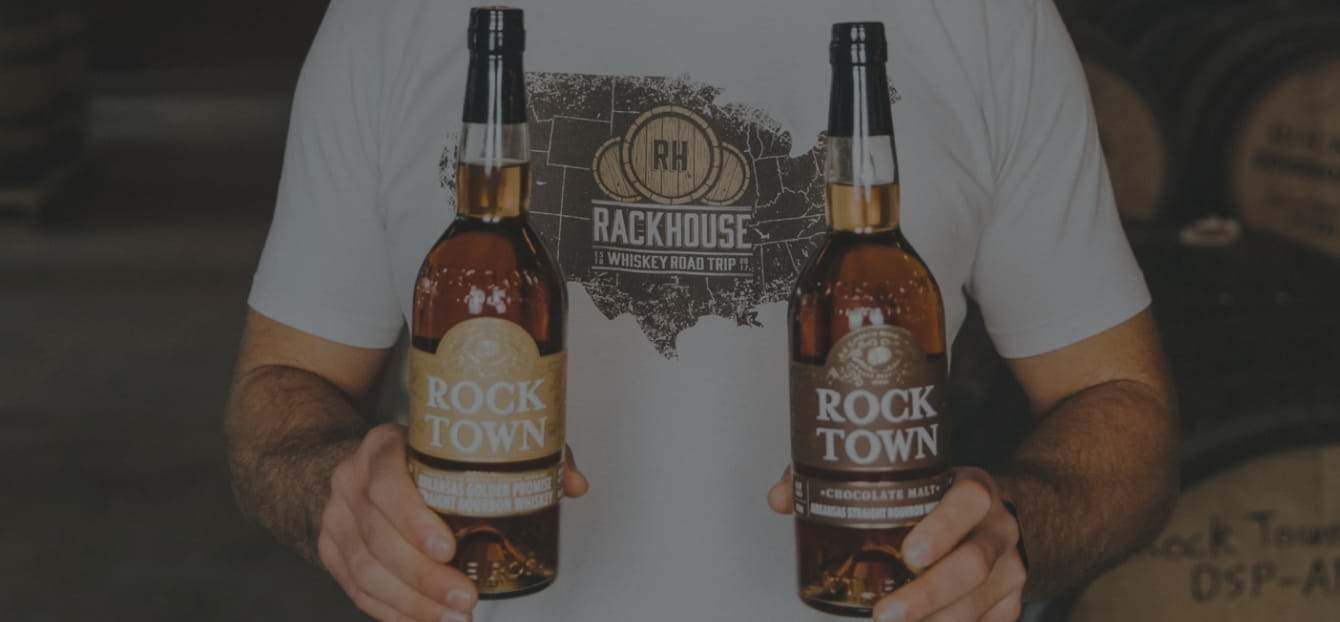
Trying to understand liquor lingo is like learning a foreign language. But trust us, once you know the difference between a column vs. pot still or what ABV stands for, you’re well on your way to becoming a bona fide whiskey expert. First you’ll need to learn the most important jargon so we made this guide to whiskey terminology just for you. Here are the 40 most essential whiskey terms every whiskey lover or aspiring fan should know.
ABV: Short for “Alcohol By Volume,” ABV refers to the alcohol content of a given liquid — AKA the percentage of the liquid that is alcohol. Typically, when it comes to whiskeys, ABV is referred to by its proof rating, but other industries (like the beer world) prefer to stick with ABV.
Age Statement: A bourbon's age statement indicates the age of the youngest bourbon in the bottle. For example, a bourbon with an age statement of 10 years is made up entirely of bourbons that are at least 10 years old. Age statements are optional for bourbons older than four years.
Angel’s Share: During the process of aging whiskey and due to the porous nature of wood barrels, a small percentage (roughly 2%) of every barreled whiskey batch is lost. Traditionally, it was believed that this whiskey evaporated up to the heavens and, thus, it was coined the “Angel’s Share.”
Barrel/Cask: Large, cylindrical containers typically made from oak wood staves and bound together via metal rings or hoops, barrels and/or casks are the vessels in which whiskeys are aged — imparting both flavors and aromas into the liquor. These containers are also often charred on the inside to impart smokey notes into the spirits, as well.
Barrel/Cask Strength/Proof: Barrel strength, cask strength, barrel proof, and cask proof all refer to the same basic concept — that a given liquor has not been altered or diluted following the aging process. This usually results in a higher ABV, which typically ranges from 58–66%.
Blend: If a whiskey is called a blend, it’s a single whiskey that has been created by combining multiple other whiskeys and sometimes also neutral grain spirits, colorings, and flavorings. True whiskey fans don’t always feel a blend is as good as a “pure” single-malt spirit. Those who blend whiskey find it to be an art form requiring an immense base of knowledge and careful experimentation so as to maintain the integrity of the end product.
Bottle in Bond: By government standards, Bottle in Bond means it’s a minimum of four years old and will always be bottled at 100 proof. It must also be distilled by one distiller. Did you know it’s actually legal to get bourbon from multiple distillers and put it in a bottle and call it bourbon? That’s why this standard is necessary. If you see “Bottled in Bond” you can count on it being high quality.
Bottling Proof: Before most bourbon is bottled, it is diluted to 80 proof (40 percent ABV), which is the lowest the whiskey can be diluted to while still qualifying as a bourbon. This is done by bourbon producers to reduce costs and to make bourbon more palatable, without dilution, to a larger market. However, there are exceptions and a higher proof bourbons are readily available.
Cask Strength: For a bourbon to be considered cask strength, it must not be diluted before being bottled. Cask strengths vary greatly from barrel to barrel, due both to warehouse placement and weather conditions. As such, the strength of a bourbon depends primarily on how much it evaporates while aging. If more alcohol evaporates out, the bourbon will be lower proof. Conversely, if more water evaporates, the final product will be higher proof.
Char/Charring: The process of charring involves partially burning the inner surface of the wood barrels (used for aging) in order to add smoky flavor to the whiskey.
Chill Filtration: This is a process in which whiskey is chilled prior to filtering and bottling. By chilling whiskey, impurities can be removed as the spirit is run through a filter. It can remove undesirable impurities but can also remove the good acids you want in your whiskey. If you’re looking for a natural-tasting whiskey, look for the words “non-chill filtered.”
Column Still: Know the difference between a column still and a pot still? Or how the different types of stills can affect whiskey flavor? Column stills are more commonly used by big American whiskey brands to distill bourbon and rye. Instead of direct heat, these stills use steam injection or “jackets.” A column still works almost like a series of pot stills, except the pot stills are stacked on top of one another in one long vertical column. On top of the boiler, which houses the mash, is the analyzer column, in which the steam enters and begins its ascent. After the alcohol boils off into vapors it travels up the analyzer column and up into the rectifier column, where it cools and begins condensing. These spirits require less aging, are more pure and are less prone to volatile compounds.
Cooperage: The name of the oak barrel or barrels a whiskey is aged in. According to distiller orthodoxy, 70 to 80 percent of what you taste in whiskey comes from the cooperage, which produces flavor through extraction and oxidation. American bourbons, ryes, and Tennessee whiskeys use new barrels. For just about everything else, it's used barrels, either secondhand American ones or Spanish sherry casks.
Distillation: When broadly defined, this is the process by which a liquid is purified through a process of heating and cooling. Regarding whiskey, “distillation” is the name for one of the larger processes in its creation — including removing the alcohol created during fermentation from the wash, resulting in a concentrated liquid that will go on to be matured into a final spirit.
Distiller/Distillery: A person or company that creates liquor; the facility in which liquor is created.
Distiller’s Beer: Not simply a colloquialism, this is a thick, fermented mash comprised of water, yeast, and cooked grains. By definition, it is in fact a beer and is perfectly drinkable with an ABV of roughly 7-10%. However, in order to create whiskey, this liquid must be further distilled — often multiple times.
Dram: A shot of the kind of whiskey you're not supposed to shoot.
Fermentation: The chemical breakdown of a substance — in this case, the breakdown of sugars by yeast resulting in the creation of ethanol. This is an absolutely essential process in the creation of whiskey and beer — even non-alcoholic varieties.
Finger: An imperfect measurement of volume, this refers to the amount of liquor it would take to fill a rocks glass to the width of a single human finger wrapped around the base. It amounts to around an ounce of liquor — of course, that also depends on the width of the finger in question.
Finish: This actually refers to two different and distinct things regarding whiskey. First, “finishing” is a reference to a secondary aging process at the end of the creation of a whiskey — in which the spirit is removed from one barrel or cask of a particular origin before being moved into another of a different origin. The second meaning is a reference to the tail end of a drink of whiskey — specifically, the flavors that become apparent after you’ve swallowed the whiskey in your mouth. In other words, the finish is the aftertaste.
High Rye: This denotes a bourbon that contains rye as its second main ingredient behind corn. High-rye bourbon is known for having a spicier and richer flavor than other bourbons.
Malt: Malting is a process in which grains like barley or wheat are allowed to germinate and sprout. During germination, the grain’s starches are converted into fermentable sugars. After the grains germinate, they are toasted to prevent the grain from growing any further. The malting process gives whiskies a toasty, honeyed sweetness.
Master: The title granted to top-level professionals — usually with years and years of experience — in the whiskey industry, e.g. Master Distiller, Master Blender, etc. RackHouse Whiskey Club partnered with Bardstown Bourbon Company last year and worked with Master Distiller Steve Nally.
Mash Bill: A mash bill is a specific bourbon's list of ingredients. While all bourbon must contain at least 51 percent corn, the other 49 percent will vary depending on the distiller. Most bourbons, though, contain a mix of wheat, rye and barley.
New American Oak: “New American Oak” refers to the wood in which most American-made whiskies are aged. American barrels are constructed from white oak grown primarily in the Midwest, the Appalachians, and parts of Oregon. Whiskeys produced in American oak barrels tend to be creamier, with stronger flavors of cream soda, vanilla, or coconut, as compared to whiskeys made in imported barrels. The general consensus amongst distillers is that 70-80 percent of a whiskey’s flavor comes from its time spent in barrels.
Palate: In regards to whiskey (and spirits in general), this is a generic term that refers to one’s ability to discern and appreciate the nuances of flavors, aromas, and textures of an alcoholic beverage.
Peat: A brown, soil-like deposit found in Scotland that consists of decomposed vegetation. This is the flavor most commonly associated with Scotch whisky.
Pot Still: Pot stills are wide-based stills traditionally made from copper that are heated directly during the distillation process. Distillates are produced one batch at a time and a pot still better allows for alterations to texture and taste. Because of this, spirits produced in a pot still tend to be more raw and less striped of flavor or congeners than those produced in a column still.
Region: A broadly defined term that refers to the locale from which a particular whiskey or whisky hails. This can include extremely wide areas, like countries, but can also be much smaller — including specific counties or towns.
Single Barrel: A premium category of whiskey in which each individual bottle is comprised exclusively of an aged spirit from a solitary wood barrel or cask.
Small Batch: This term refers to a whiskey offering created from a limited number of select barrels of the aged spirit. There are no legally-defined parameters as to what makes a whiskey “small batch.”
Spirit: A generic term used to refer to any distillate, or alcoholic liquid comprised of ethanol and water made from a mash. It is often used as a synonym for “liquor.”
Straight: As defined by United States law, “straight” whiskey refers to a spirit distilled from cereal grain mash to a concentrate that does not exceed 80% ABV and is subsequently aged in charred oak barrels for at least two years at a concentration not exceeding 62.5% at the start of the process.
Sour Mash: Sour mash is made by adding a portion of previously used mash to a fresh batch, similar to using a sourdough starter for bread. This gives the mash a slightly sour aroma, but it doesn't affect the flavor of the finished whiskey. This is done for two reasons: it helps with consistency from batch to batch and this process lowers the batch's pH, which makes the fermentation process more efficient.
Sweet Mash: The very rare sweet mash bourbon occurs when only fresh yeast is added to a batch. This leads to a higher pH and produces flavors you wouldn't find in sour mashes.
Wheat/Wheated: Wheat is sometimes used as a replacement for barley in the malt of a whiskey, beer, or other spirits. It does not change the distillation process, but it can alter the flavor. By contrast, if a spirit is “wheated,” that means it has wheat added to its recipe not as a replacement for barley (or whatever other grains the liquor might contain), but rather as a flavor-adding element. This is often seen in bourbons, or “wheated bourbons.”
Whiskey: A distilled alcoholic beverage made from fermented grain mash. This particular regional spelling is used commonly to refer to whiskey spirits from Ireland, the United States, and various other locales. It’s been suggested that this spelling is common in the US thanks to Irish immigrants and is sometimes used simply as a preference of a given distillery.
Whisky: A distilled alcoholic beverage made from fermented grain mash. This particular regional spelling — which originated in Scotland — is used commonly to denote spirits from Scotland, Japan, Canada, and various other locales. Sometimes, this spelling is also used as a distillery’s preference and there are no laws denoting how it must be spelled.
White Lightning: Also known as “White Dog,” this once referred exclusively to colorless, corn-distilled bootlegged moonshine. Today, it’s a colloquialism for virtually unaged “white” whiskey — usually clear in its appearance, harsh in its flavors, and high in alcohol content.
Yeast: A microorganism used widely in the creation of alcoholic beverages, especially whiskey and beer. And different types of yeast can result in vastly different flavor profiles.


